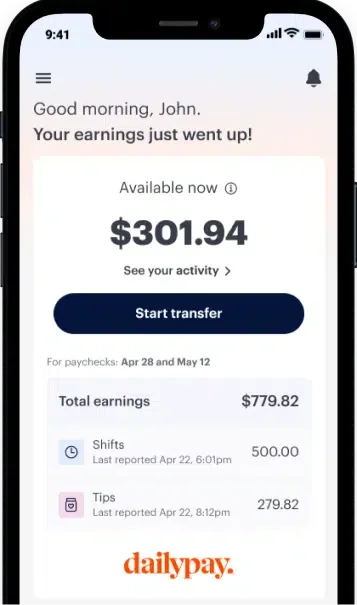According to the Internal Revenue Service, as of March 11, the average tax refund for the 2021 tax year was $3,352. Most working Americans would agree that’s a significant amount of money. If you’re due for a refund this tax season, now is the time to start thinking about how you’ll spend it. Being intentional with cash windfalls can help you get ahead of your financial goals and set the stage for a brighter future.
Not sure where to start? We’ve got you covered. Here are six potential ways to spend your tax refund.
1. Pay down debt.
An influx of money can make a powerful dent in your debt load, especially if you have high-interest accounts. Credit cards are the most common culprit. It’s dangerously easy to get caught in a debt cycle, especially if you don’t have a plan for paying off your balances. Your tax refund can be a game changer. If you have multiple accounts, focusing on the ones with the highest interest rates will save you the most money in the long run. Alternatively, you can prioritize your smallest balances first; a strategy known as the debt snowball method.
Either way, reducing your debt can help improve your credit score. It’s an important part of your financial life because lenders consider your score before approving you for new credit accounts. A lower score can make it harder to get approved with the best terms and rates.
2. Give your savings account a boost.
When a financial disaster strikes, your emergency fund can come to the rescue. As the name implies, it’s a pool of money that’s designed to support you through unexpected financial hiccups. This can include everything from job loss to a medical emergency to a car repair — or anything else that throws your budget off course. Keeping your money in a high-yield savings account is a simple way to earn interest on your savings.
A good benchmark is to build up three to six months’ worth of expenses, but this can be a challenge. Your tax refund can help put some muscle behind your emergency fund. Even a small wave of cash can serve as a starter fund that you continue building on month after month. Look at your budget to decide on a monthly savings target that feels right for you.
3. Buy something you need.
Most people have a laundry list of big-ticket expenses they’ve been putting on the back burner. Maybe your washing machine has seen better days, or there are home or car repairs you’ve been ignoring. This is where your tax refund can help. In one fell swoop, you might be able to buy a much-needed appliance or put money toward a pricey repair you’ve been putting off. Others may use tax season to finally update their laptop or family television. If your debts are under control and your emergency fund is in good shape, you might consider putting this money in your vacation fund.
4. Put it toward a home down payment.
It’s true that the more money you put down on a home, the less you’ll have to finance. That translates to a lower monthly mortgage payment. Saving up 20% is ideal, but many homeowners put down much less. FHA loans, which are backed by the Federal Housing Administration, approve borrowers with as little as 3.5% down. It may also possible to get a conventional home loan with just 5% down. No matter which loan program you choose, your tax refund can give your down payment a nice bump.
5. Invest it.
If your financial foundation is strong and your tax refund truly feels like extra money, you might consider investing it. You can put it right into your retirement account or use it to boost your children’s college fund. Alternatively, you can open a brokerage account and invest directly in a variety of assets such as mutual funds, exchange-traded funds (ETFs), and low-cost index funds. The longer you’re invested, the more you can benefit from compound interest. This essentially allows you to earn interest on interest.
6. Set it aside for non-monthly expenses.
If you aren’t planning for it, the holiday season can roll around and majorly disrupt your budget. To avoid racking up holiday debt, you might consider earmarking your tax refund for gifts, décor, travel, and other annual holiday expenses. You can take the same approach with other non-monthly expenses, like insurance premiums, kids’ summer camps, and any other bills that pop up at odd times of the year.
If you’ve got a tax refund coming your way, you can also split this money between multiple goals. You might even set aside just a bit for a fun splurge. Nothing too crazy — just a little something to treat yourself while you work toward your other goals.
DailyPay is here to support you no matter how you use your tax refund. Our built-in savings tools are designed to make your financial life a little easier.
All information herein is for educational purposes only and should not be relied upon for any other use. The information herein does not constitute the rendering of tax advice, financial advice or other professional advice by DailyPay.

